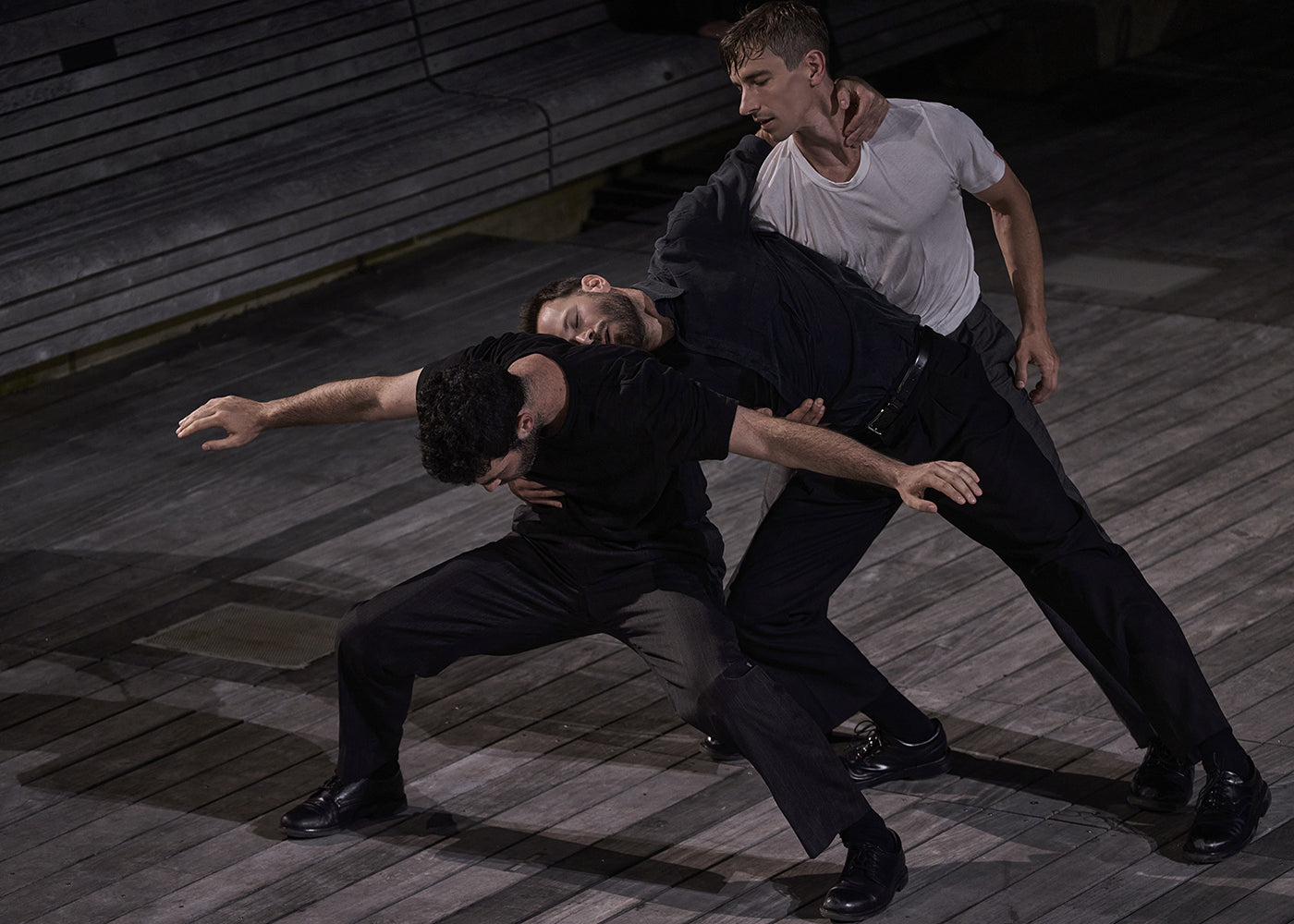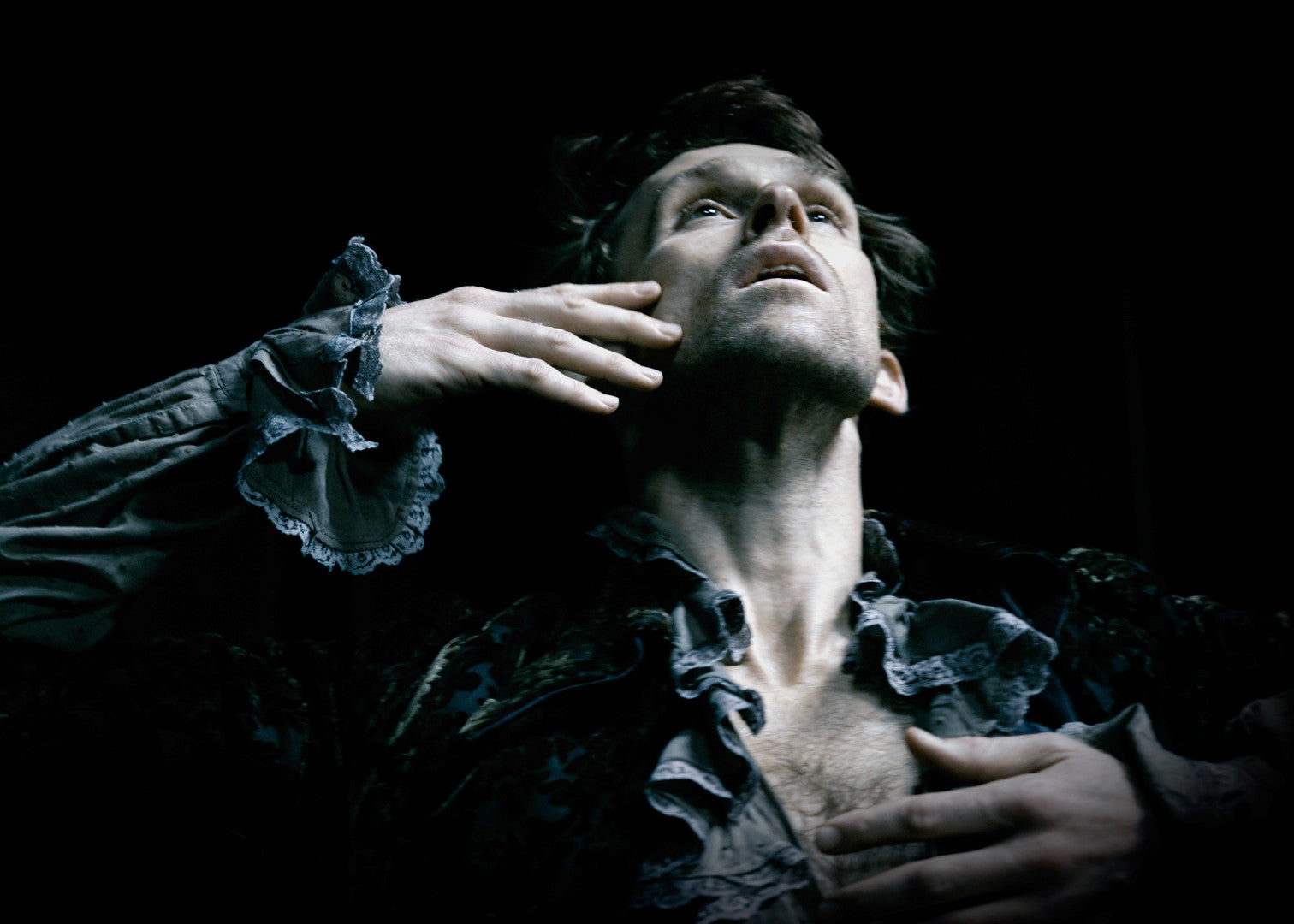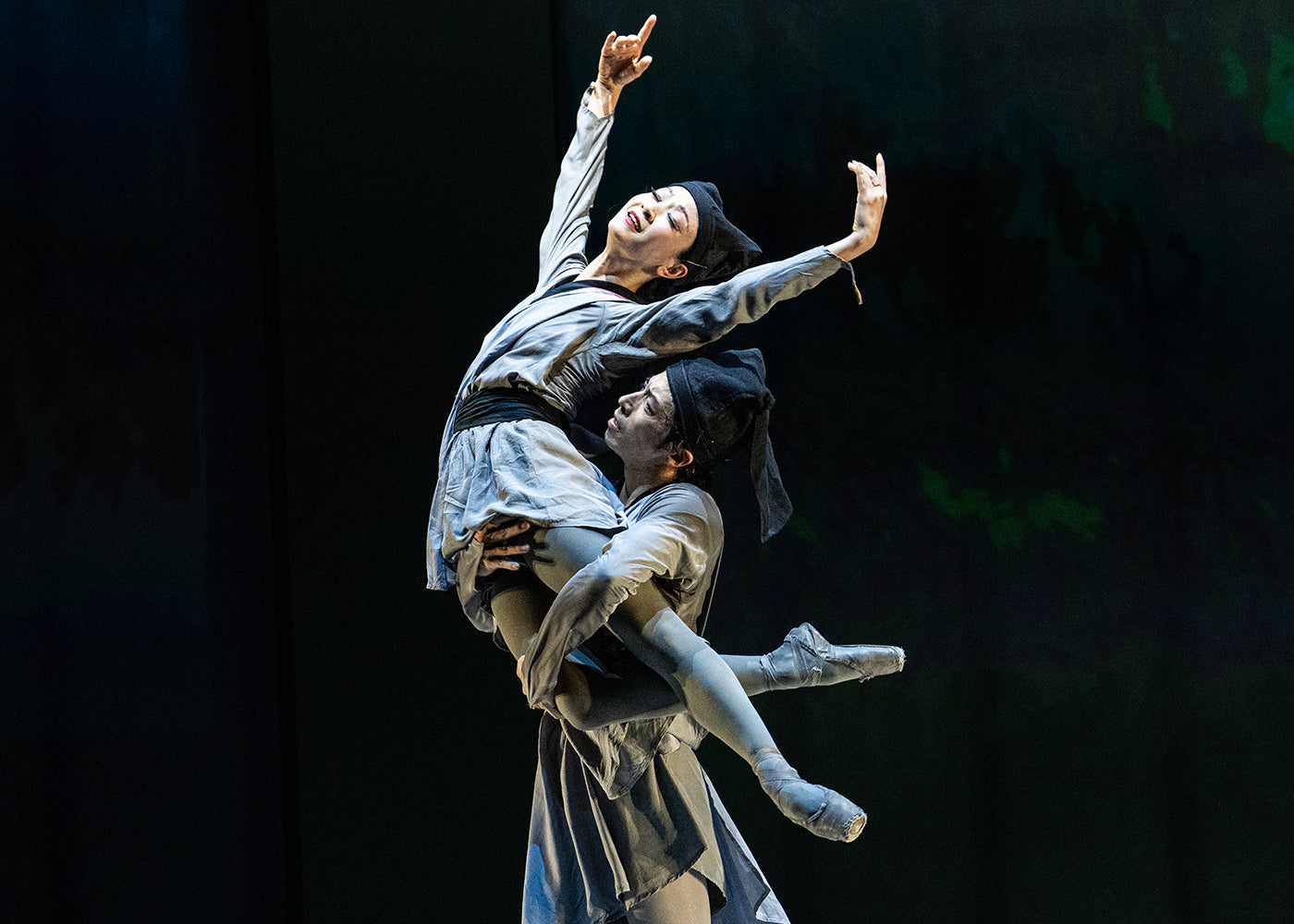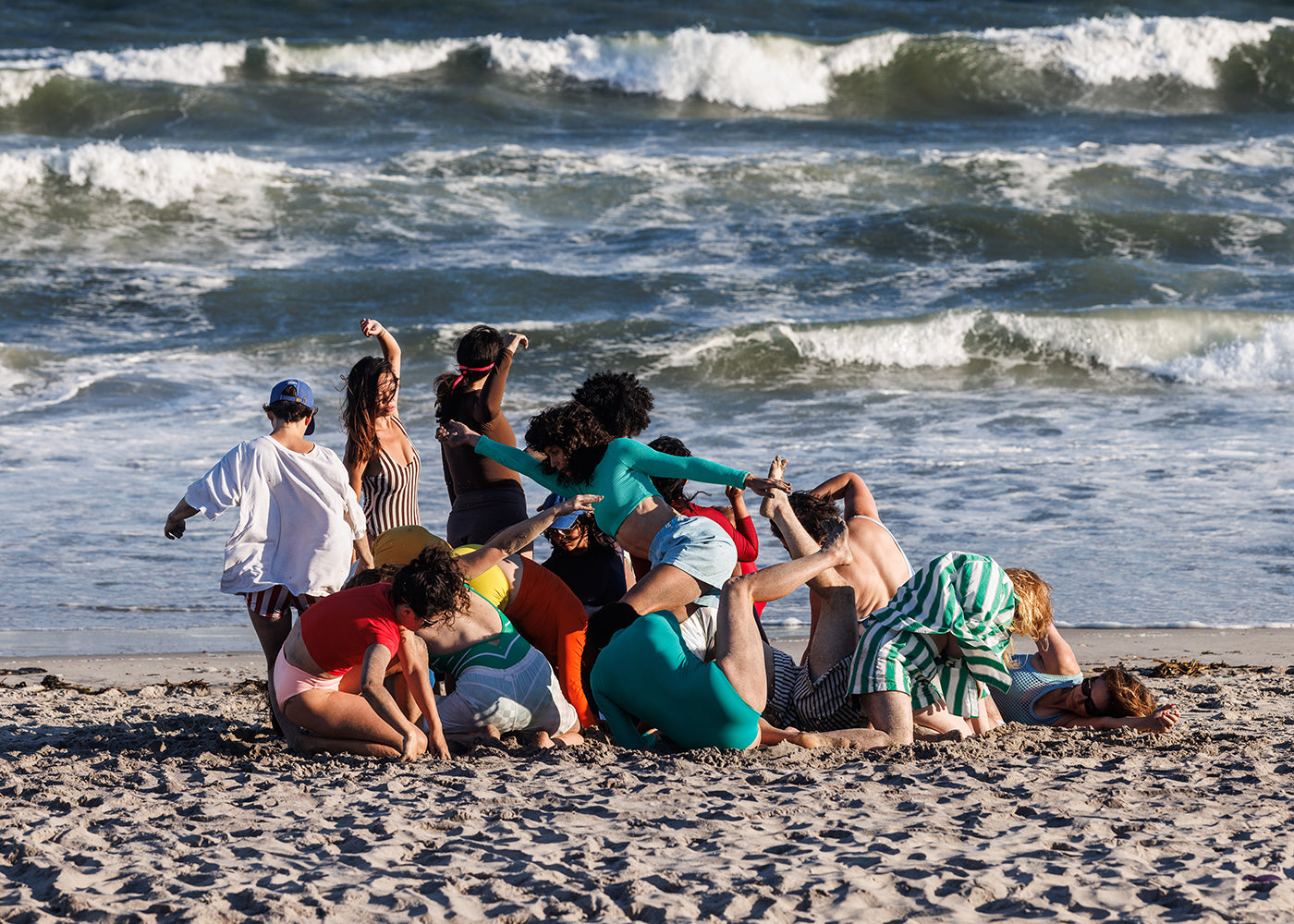My part of the longstanding bargain upheld, I cleaned my teeth, tied up my hair, locked the backdoor, turned off my phone, and mentally prepared myself to become one part of an audience, to give myself over to the unexpected. “Attending a performance entails social and cultural reciprocity—whether prescribed, or intuited by the viewer. The occasion involves rituals, however small and little pondered these may be. No nineteenth-century patron of the opera or ballet would have thought of not wearing evening attire to a performance.”[note]Deborah Jowitt,“Rituals of Spectatorship,” Dancehouse Diary 7 (Melbourne: Dancehouse, 2014), 4.[/note]
Ritual explored through dance enables us “to perceive, experience and relate to time and space differently…. and allow our inner selves to have revelations of the sacred.”[note]Angela Conquet, Artistic Director of Dancehouse, “In Praise of Rituals,” Dancehouse Diary 7, 3.[/note] And in the upstairs studio typically flooded with light, dark floor to ceiling curtains concealed the space and altered my reading of the familiar before I even sat down. The smell of incense enveloped me and heightened the trance-like state; the perfect partner to the studio space swallowed by darkness. With my orientation and sense of the everyday confused, I was in the right frame to experience Tony Yap and Yumi Umiumare’s “Zero Zero.”
As the audience filed in, the blurred contours of Yap and Umiumare are gleaned at opposing ends of a long white band on the floor. They were not so much waiting on the stage as perhaps already ‘performing.’ And as the audience chatter slowly gave way to the ‘performance’ and the lights dimmed, the hypnotic effect took hold. Yap lay supine on the floor, beneath a suspended microphone and a single golden light whilst Umiumare sat crouched over a bowl of illuminated water. The soundscapes created by Matthew Ginghold served as the final magnetic lure, and throughout the performance my eyes travelled between both dancers and Ginghold, seated in the corner and lit by the glare of the computer screen.
As the performance unfolded, Yap and Umiumare appeared in beautiful harmony with one another. Linked by an unseen magnetic pull between the two, they, true to magnetic reference, never touched until the very end when the soles of their feet pressed into each other. This work, three years in development, “carried out in Yap and Umiumare’s spiritual and ancestral sites in Malaysia and Japan,”[note]“Zero Zero,” Dance Territories program notes, October 14-18, 2014.[/note] is beautifully stripped back. And it is in this peeled back state that clarity is seen. It is in the simple pendulum swing of a light above Yap and Umiumare’s heads as they stood side by side. Back and forth it swung before being caught by Yap’s outstretched hand and sent swinging side to side. In the darkened space, the light moved across their faces and created the pleasingly confusing impression of a stationary figure in flux. Simple shadow play dancing across the form, it gave the impression of altering both the perception and experience of time. Later, a red light suspended above for a brief sequence had the effect of transporting me to someplace where the air was hot and sticky.
The nostalgic sound of a transistor radio being tuned further picked up on this time shift, as I watched Umiumare clean her teeth, lost to her own private world, as I myself had been earlier in the evening. As Umiumare explains, “for me, dance/theatre/performance is a ritual in itself. It creates a gateway for performer and audience, to move from the ordinary to the extra-ordinary. Conducting rituals together, we sometimes successfully transform or even provoke an altered state of consciousness. I am fascinated in exploring this ‘crack’ —this moment of transformation, where both spirit and body are propelled into another world or existence. In our show “Zero Zero,” I am brushing my teeth as a part of my movement. And though the repetition of this mundane action, the ‘crack’ opens and takes us into a shamanistic world, in which I find myself channeling the memory of a blind shaman on Osore-zan, the northern part of Japan.”[note]Yumi Umiumare, “On Rituals,” Dancehouse Diary 7, 12.[/note]
At times, Yap moved as if a weightless marionette, the balls of his feet rarely touching the stage. He appeared untethered from the ground as he performed a series of traditional Malaysian dance movements. Umiumare, by comparison, recalled an automaton as she repeated various sequences, before giving the impression of transforming into a physical representation of sound. The relationship between Yap and Umiumare and their considered and restrained movements ensured nothing was overdone in this exploration of ritual space.
From here, we are catapulted someplace else. To another darkened interior, this time in the downstairs Sylvia Staehli Theatre, now adorned with velveteen drapery. Our link, still ritual, but the means utterly different in Nicole Mossoux and Patrick Bonté’s “The Coffee Drinkers.” This time the two dancers on the stage are not linked by magnetic pull, but presented as a mirror image. They appear, Leslie Mannès and Maxence Rey, in identical outfits, “two elegant figures with a furious obsession for symmetry…. [until] certain anomalies begin to slip into their comportment and the place itself is revealed to be something other than what it first seemed. As cracks appear in their insouciance: their world divides in two, giving birth to a fashionable Venus who makes their coffee.”[note]“The Coffee Drinkers” Dance Territories program notes, October 14-18, 2014.[/note] This time the ‘crack’ revealed not a liminal plane between the visible and the invisible, but a coffee-stained and delirious confusion. The crack exposed an illusionary likeness derived from the surface layer blonde wigs all the way to the bodies that sweat coffee from every pore of the skin.
Performed with palatable dark humor, great comic timing, and to the accompanying strains of an exaggerated electric frizzle of lights, the ritual of coffee drinking never looked so grubby. This work at times called to mind the culinary dishes presented in the films of Jan Švankmajer as a near identical Mannès and Rey devoured the table setting before them. As in the film Little Otik (2000), their ritualised act blurring the line “between the consumer and the consumed, and between a series of otherwise oppositional or divergent states between subject and object, …. food and the eater, food and waste, food and the body itself.”[note]Zoe Gross, “Little Otik,” Senses of Cinema 71, June 2014.[/note] The ritual uncovered in this work is one of obsession and imposed social ceremony. “Here, appetite begets appetite.”[note]Zoe Gross, “Little Otik.”[/note]
But perhaps the Švankmajer film that “The Coffee Drinkers” most calls to mind is Food (1992). It is no stretch of the imagination to picture Mannès and Rey in their silvered slips in any of Food’s three vignettes, from Breakfast, which makes dumbwaiters of its earlier diners through to Dinner. To say little of the cannibalistic Lunch, which sees two diners eat the plates on the table, before eating their own clothes and shoes (in turn a reference to Charlie Chaplin’s The Gold Rush (1925)*) and finally each other. I may have initially thought I left spiritual transcendence at the door, but the message in this work actually reaffirms that all things are transient (namely, as they pass through the body). This look at the darker social rituals of consumption, ingestion, and sustenance may also make you question the source of your next coffee.
Consider yourself forewarned: ritual may help us sidestep the mundane, but I’d be wary if Venus is your barista.
* Charlie Chaplin’s character “makes his own meal of the sole, nails, and laces, rolling the laces on his fork like spaghetti and relishing each individual nail as if they were the bones of a quail (the shoe and laces were made of black licorice, the nails of hard candy).”[note]Luc Sante, “The Gold Rush: As Good as Gold,” The Criterion Collection online, June 11, 2012.[/note]









comments